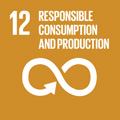- Docente: Andrea Gaucci
- Credits: 6
- SSD: L-ANT/06
- Language: Italian
- Moduli: Andrea Gaucci (Modulo 1) Chiara Mattioli (Modulo 2)
- Teaching Mode: In-person learning (entirely or partially) (Modulo 1); In-person learning (entirely or partially) (Modulo 2)
- Campus: Ravenna
- Corso: Single cycle degree programme (LMCU) in Conservation and restoration of cultural heritage (cod. 8616)
-
from Sep 26, 2024 to Jan 29, 2025
-
from Oct 22, 2024 to Jan 29, 2025
Learning outcomes
Acquaintance with art and handcraft of the pre-Roman populations and ability to connect artistic expressions and historical frame.
Competence to evaluate form, style, function and meaning, that are often expression of an ideological message.
Ability to carry out an autonomous research.
Course contents
The course, that will start on September 28th 2021, is divided into two modules: the first of 30 hours taught by Prof. Andrea Gaucci more closely related to historical and archaeological aspects; the second of 26 hours taught by Prof. Chiara Mattioli, more closely related to the theoretical-methodological aspects. The lessons schedule provides that the two teachers alternate in carrying out the lessons, being the two modules closely related to each other.
The course aims to provide the necessary theoretical and practical knowledge on the productive aspects of the archeology of the peoples of pre-Roman Italy, without excluding a broader view of the Mediterranean area and transalpine Europe.
A first lesson will aim to illustrate the articulation of the course, the program, the assessment methods and to offer the broader historical and archaeological framework.
The following lessons will be divided into three parts:
Part I will illustrate the history and material culture of the Etruscans and the other peoples of pre-Roman Italy from the early Iron Age to Romanization (9th-1st century BC), with particular attention to the craftsmanship. The prevalence of the lessons in this part will be carried out by the teacher Andrea Gaucci.
Part II will focus on the more specific theme of the main artisan products (in particular ceramic, metallurgical, stone, pictorial), investigated in the context of production cycles, processing techniques and work organization. An introductory lesson will clarify the theoretical and methodological aspects of the discipline. The lessons of this part will be divided between the two teachers.
Part III includes laboratory activities, which will focus on learning the techniques of documenting archaeological finds, with particular regard to drawing. The prevalence of the lessons in this part will be carried out by the teacher Chiara Mattioli.
To complement the course, seminars will be held by specialists and a visit to the Civic Archaeological Museum of Bologna will be organised.
Readings/Bibliography
For a complete preparation, it is considered necessary to study the following texts:
G. Bejor, M. Castoldi, C. Lambrugo, E. Panero, Botteghe e artigiani. Marmorari, bronzisti, ceramisti e vetrai nell'antichità classica, Mondarori, Milano 2021, pp. 1-129.
L. Vlad Borelli, Profilo storico della tecnologia della pittura tombale etrusca, in A. Minetti (ed.), Pittura etrusca: Problemi e prospettive (Proceedings, Sarteano-Chiusi 2001), Siena 2003, pp. 140–153.
During the lessons other readings will also be suggested to deepen specific topics.
The first text is present in the Archeology library of DiSCi - UOS Ravenna. The remaining readings will be provided by the teachers.
Teaching methods
The course is organized in lessons and in a number of 16 hours dedicated to laboratory activities, which will be carried out also through seminars.
In consideration of the type of activity and the teaching methods adopted, the attendance of this training activity requires the prior participation of all students in the training modules 1 and 2 on safety in the study places, in e-learning mode.Interested students will be able to integrate the teaching of the course with practical laboratory activities within the educational offerings proposed by the Department of History and Cultures with particular regard to the possibility of an excavation experience in the Etruscan city of Marzabotto, and an experience of study, cataloging and drawing of archaeological materials. Please, follow the web pages of the teachers for further information.
Lessons start with an academic quarter, except for different needs discussed during the introductory lesson.
Assessment methods
The exam consists in an oral test. Familiarity and deep knowledge of the indicated bibliography and of all the topics covered during lessons are required.
Three general questions are the starting point of a more detailed discussion.
The overall evaluation will consider the following parameters:
- an excellent knowledge of the topics, the ability to analyse themes, to refer them by using the field-specific terminology and to discuss specific issues critically, arguing their own opinion, will be rewarded with an excellent mark.
- a mnemonic knowledge of the subject with the ability to analyse, with correct, although not always field-specific command of the language will be rewarded with a 'fair' mark.
- minimal knowledge of the subject will not be enough to pass the exam.
Teaching tools
Each lesson will be accompanied by presentation slides with a wide repertoire of images subsequently accessible through VIRTUALE.
Students who require specific services and adaptations to teaching activities due to a disability or specific learning disorders (SLD), must first contact the appropriate office: https://site.unibo.it/studenti-con-disabilita-e-dsa/en/for-students.
Foreign students and students with disabilities will be supported during the course and in the preparation of the exam through individual interviews with the teachers, who will provide all the necessary tools (e.g. bibliography in a foreign language for foreign students; concept maps for students with learning disabilities). Please express personal needs from the beginning of the course or by contacting the teachers by e-mail.
Office hours
See the website of Andrea Gaucci
See the website of Chiara Mattioli
SDGs



This teaching activity contributes to the achievement of the Sustainable Development Goals of the UN 2030 Agenda.
